-
092012. 05
No. 78 View. 19075

2012 Seminar for Promising Technologies
What is 10 promising technologies that will change our life? KISTI hold "2012 seminar for future promising technologies" on May 8th at COEX, which aims to find a strategic way for global competitiveness. Opened 10 promising technologies are ▲Theragnosis for diagnosis and therapy ▲Molecular imaging for living cell ▲Terahertz application technology ▲Brain-machine interface ▲Fuel cell for portable device ▲Nanofluid application technologies ▲Printable and flexible Solar Cell ▲Plastic alternative New Materials ▲Biorefinery for Marine BioMESS ▲Ecofriendly water-detention technology for flood in city About 2,000 people have participated in the seminar and showed strong needs for new information on future trend and technology that will lead the market. During the Seminar, KISTI introduced information mentoring program for SMEs that will provide SMEs with 1-1 information service from R&D planning to technology commercialization. -
302012. 04
No. 77 View. 17838

Dr. Park, KISTI CEO, field visit to SMEs in Kwangju City
Dr.Park Young-seo and some of KISTI researchers have visited 2 SMEs in Kwangju city on April 18th. Dr.Park's visit to SMEs has been conducting as a follow-up program of KISTI's support for SMEs. Since 2011, Dr.Park has visited about 100 SMEs around the country and has a plan to visit 50 small but strong companies this year. After visiting and learning about the need of SMEs, Dr.Park will designate 1 researcher to 1 company for 1-1 support program. Designated researcher will work and support SMEs as a coordinator between KISTI and SMEs. KISTI now has about 12,000 members of ASTI(Association of Science and Technology Information), which is a kind of consolidated community among industries, academia and research institutes. -
302012. 03
No. 76 View. 18185
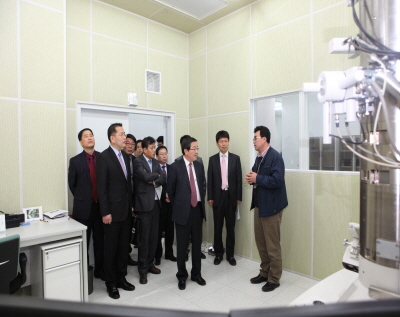
KISTI-DGIST shook hands for S&T infrastructure in local area
KISTI and DGIST shook hands for supporting S&T infrastructure in local area and raising specialists for science and engineering industry. On.March 27th, Dr.Park Young-seo,President of KISTI and some of KISTI staff including Dr.Lee Sang-gi, a director of Kyungbuk branch office have visited DGIST, which is short of Daegu, Kyungbuk Institute of Science and Technology to conclude MoU for supporting and facilitating S&T infrastructure. DGIST has a vision to be a world-class university for convergence research and has specialized program for emerging materials, information and communication engineering, medical robotics, green energy, brain science. DGIST held 1st matriculation ceremony of Masters' and Doctorate Program in 2011. KISTI and DGIST will work together for fostering specialists in science and engineering by utilizing S&T specialists, resources and information held by both sides. After the ceremony, Dr.Park and KISTI staff had a chance to visit research facilities of DGIST. -
232012. 03
No. 75 View. 17908 KISTI is a government-funded research institute designed to maximize the efficiency of science & technology and support high-tech R&D for researchers. KISTI has laid a firm foundation for sophisticated R&D by collecting science & technology information from countries around the world and providing the information to companies and research institutes. In addition, KISTI has provided a customized information analysis service to enable researchers and small & medium companies to make correct decisions on time and has contributed to maximizing research efficiency by building a world-class super computing and research network.

-
232012. 03
No. 74 View. 17205
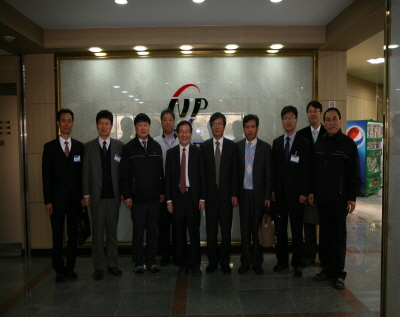
KISTI On-the-spot visit to to support SMEs
Dr.Park Young-seo,President and some researchers of KISTI have started their on-sight visiting program to SMEs on March 20th as an attempt to understand the need of SMEs on the spot and to provide 1-1 consulting services. In 2011, Dr.Park and some of researchers from KISTI's 3 main centers, information dissemination, information and supercomputing centers, paid visit to 100 SMEs and had interview with CEOs and research staffs to learn about what they really want from pubic research institutes. As a result of the interview with SMEs, KISTI has set up 1-1 consulting program and designated 1 researcher to 1 company who has suitable academic background for the need of SMEs. in 2012, KISTI will also visit about 50 SMEs and will provide every possible resources to support SMEs in developing new technology or advancing into new market. -
202012. 03
No. 73 View. 17316
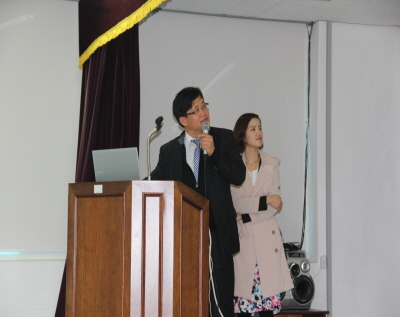
Knowledge donation for students
KISTI started its knowledge donation for students in 2012. At the beginning of this year, KISTI surveyed the need for knowledge donation from 16 offices of education and received about 500 applications. Among them, KISTI has chosen 20 schools which are mostly located in provincial areas where students are not easy to enjoy scientific and educational benefits. On March 16th, Mr.Kim Byung-jung, Deputy director of KISTI Busan branch office and2 KISTI staff have visited 2 schools located in KyungNam Province and gave a lecture on science and technology customized for students. KISTI will strengthen its knowledge donation for students this year and will develop various donation programs for students. -
282012. 02
No. 72 View. 18003

Gene social network for rice, one of world's four major grains, identified
Korean researchers have led a study to identify a gene social network for rice, one of the world's four major grains.? This gene social network study was published in the Proceedings of the National Academy of Sciences on October 31. The study was led by Prof. Lee In-suk at Yonsei University, with participation of Prof. Pamela Ronald from the University of California, Prof. Edward Marcotte of the University of Texas in the U.S., and Prof. Seo Young-su at Pusan National University in Korea. The study was conducted with the support of the "Veteran Researcher Assistance (Leap Research)" program, which is managed by the Ministry of Education, Science and Technology (Minister Lee Ju-ho) and the National Research Foundation of Korea (Chairman Oh Se-jung). The study was published online first in the October 31 issue of the Proceedings of the National Academy of Sciences, a prestigious international science journal. The study was titled 'Genetic dissection of the biotic stress response using a genome-scale gene network for rice.' Prof. Lee's team constructed a gene social network that interlinks 20,000 genes, or half of all rice genes, for the first time in a commercial crop and discovered new genes (rox 1, 2 and 3), which are important to its resistance to diseases and insects by using the network. Prof. Lee has also constructed gene social networks for yeast, a micro organism (Science 2004), eelworm (Nature Genetics 2008), Arabidopsis thaliana, a plant model (Nature Biotechnology 2010), and humans (Genome Research 2011). He has thus demonstrated that scientists can effectively predict and discover new genes that will be important to disease resistance in humans and to the resistance of plants to the environment.? Notably, Prof. Lee this time constructed a gene network for rice, a commercial crop, and demonstrated that a gene research technique based on networks can be an important solution to addressing the food, energy, and environmental problems of the world going forwards. The research team also successfully discovered three rox genes, which play a critical role in improving a plant's resistance to diseases and insects, by conducting tests of only five candidate genes using the network. This is a method that thus allows scientists to discover the functions of new genes in a greatly more efficient manner (12-fold efficiency increase), when compared with the conventional genetic research method based on a random search. Prof. Lee said, "The study is a success wherein we completed a gene social network for rice and discovered genes that are resistant to certain harmful environments, including drought, diseases and insects, by using the network. We also demonstrated the possibility for the development of transgenic crops." He added, "Such a gene network is expected to bring about revolutionary advances in research on agriculture and bio energy in the future." Source - Hellodd.com -
282012. 02
No. 71 View. 17048 KISTI, Hannam University and ASTI(Association of Science and Technology) agreed to cooperate for raising digital manufacturing specialists utilizing supercomputer on Feb.21st at KISTI head office. Heads of three organizations shared their experience and opinions on difficult situation of SMEs due to the shortage of specialized manpower. During the meeting, Dr.Lee Sang-min introduced KISTI's supporting program for "Training program for advanced design utilizing supercomputer". Dr.Park Young-seo emphasized the importance of SMEs in Korea and KISTI will not save any efforts in promoting the competitiveness of SMEs. Dr.Kim Hyung-tae, President of Hannam University also said that this kind of tripartite cooperation among industry, university and research institute in raising specialists for regional economy will set a firm foundation for supporting SMEs.
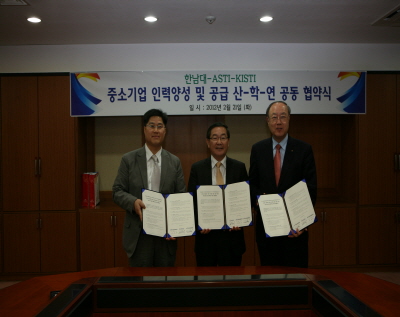
-
202012. 02
No. 70 View. 16959 KISTI held opening ceremony for EDISON CENTER at its head office in Feb.15th. EDISON is a short of Education-research Integration through Simulation On the Net and is designed to make students and graduate students of science and engineering area enable to utilize and simulate up-to-date research results on On-line. KISTI will provide them with EDISON platform connected with high-performance research network and research results in thermofluid and energy,chemistry,structural analysis and dynamics and Nano materials are available for use. Dr.Park young-seo,President of KISTI said that KISTI will support and strengthen its support for students and graduate students of science and engineering area by expanding and upgrading EDISON platform and its software.
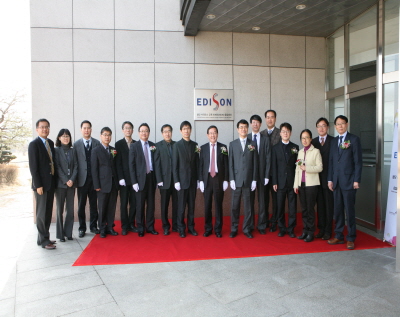
-
162012. 02
No. 69 View. 18421

'Fundamental technology for hot electron solar cell' developed
KAIST Prof. Park Jung-yeong's team publishes study in September 14 issue of 'Nano Letters' a leading nano science journal The National Research Foundation of Korea (Chairman: Oh Se-jung) said, on October 6, that Korean scientists had developed a fundamental technology for hot electron solar cells that are created by absorbing solar light. The study was led by Prof. Park Jeong-young at the EEWS Graduate School in the Korea Advanced Institute of Science and Technology (KAIST, President: Suh Nam-pyo) and was assisted by master's program student Lee Young-keun and doctoral student Jung Chan-ho. Prof. Park's team detected hot electrons generated on the surface of nanodiode by light by using a nanodiode that consisted of a metal thin film and a metal oxide semiconductor, and transformed them into a nanosome measuring dozens of nanometers through surface treatment of the metal thin film of the nanodiode. This nanosome displayed a surface plasmon. The research team measured the hot electrons detected on nanodiode, and thus examined the amplification of hot electrons due to a surface plasmon. This suggested that a surface plasmon maximizes the generation of hot electrons, and this principle can be applied to increasing the efficiency of solar cells. Prof. Park said, "Accurately understanding and measuring hot electron is very important in surface science and energy engineering because it allows us to fundamentally understand the process of energy loss. The development of this fundamental technology related to hot electrons is expected to have applications in the development of high efficiency transformation devices." The study was published online first on September 14 in Nano Letters, a prestigious journal in the nano science field. #?Glossary o Hot electronHot electrons are generated on the surface due to energy conversion process when energy is transferred to the surface from outside. In this process, external energy entails various phenomena, including chemical reactions, such as the absorption of light, the absorption of molecules and catalytic reactions, or the colliding of electrons or ions. Converted energy allows for the flow of hot electrons on the surface. The detection of such hot electrons is possible by using a nanodiode comprised of a thin film oxide. Understanding and measuring these hot electrons holds significance in that it allows the process of energy loss at the molecular level to be better understood. o Surface PlasmonThis refers to quasi particles in which free electrons vibrate collectively on the surface of a metal. The phenomenon whereby light is contained on the surface of a metal, due to the interaction of light and free electrons within the metal, is called surface plasmon resonance. As a result of this surface plasmon resonance, the intensity of the metal?s electromagnetic field increases. The cross-section where light is absorbed by a metal changes due to a surface plasmon, and as a result, the penetration ratio of light changes at a certain wavelength at which the surface plasmon is visible. o Nanodiode A nanodiode is comprised of a metal thin film and semiconductor (oxide semiconductor or compound semiconductor), and it refers to the concept that hot electrons emerge on the surface of nanodiode before they are detected by overcoming Schottky energy barrier. Source - Hellodd.com

 Delete Article!
Delete Article!